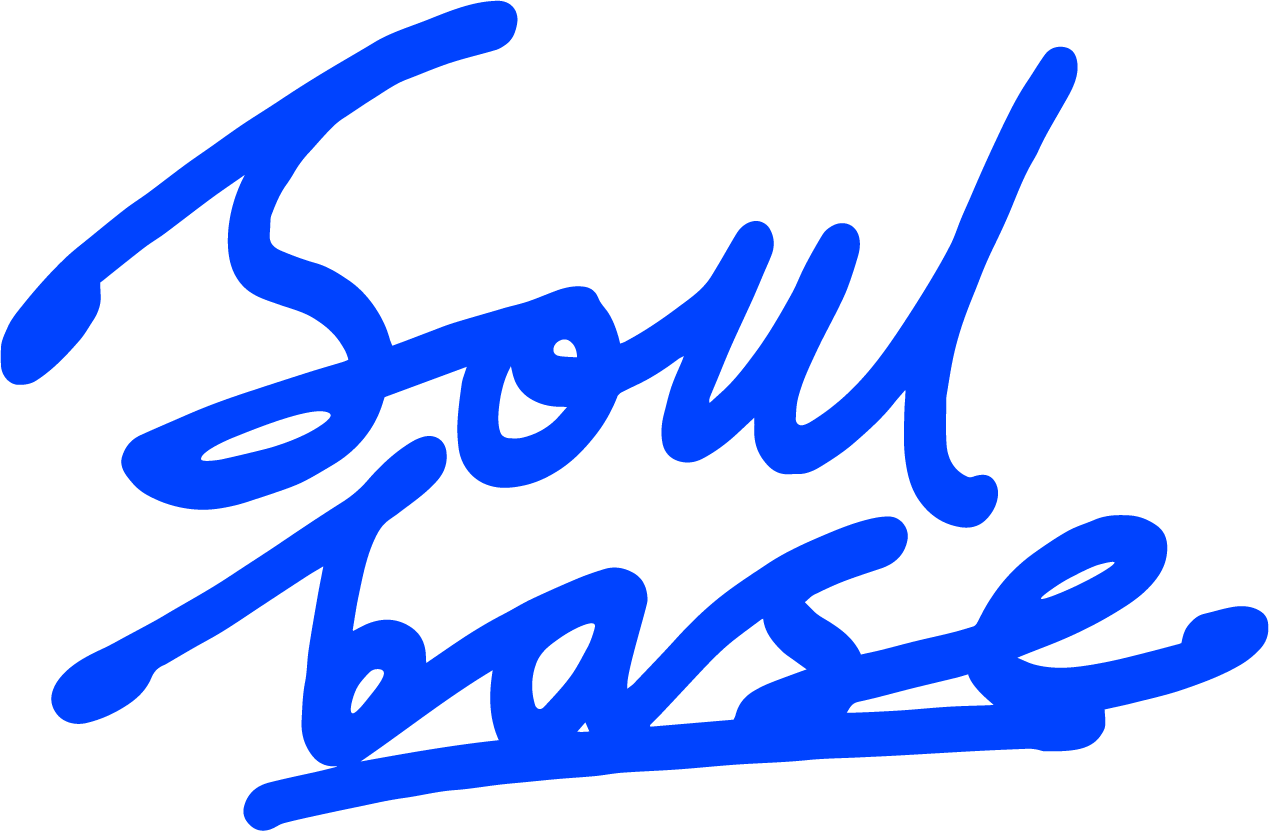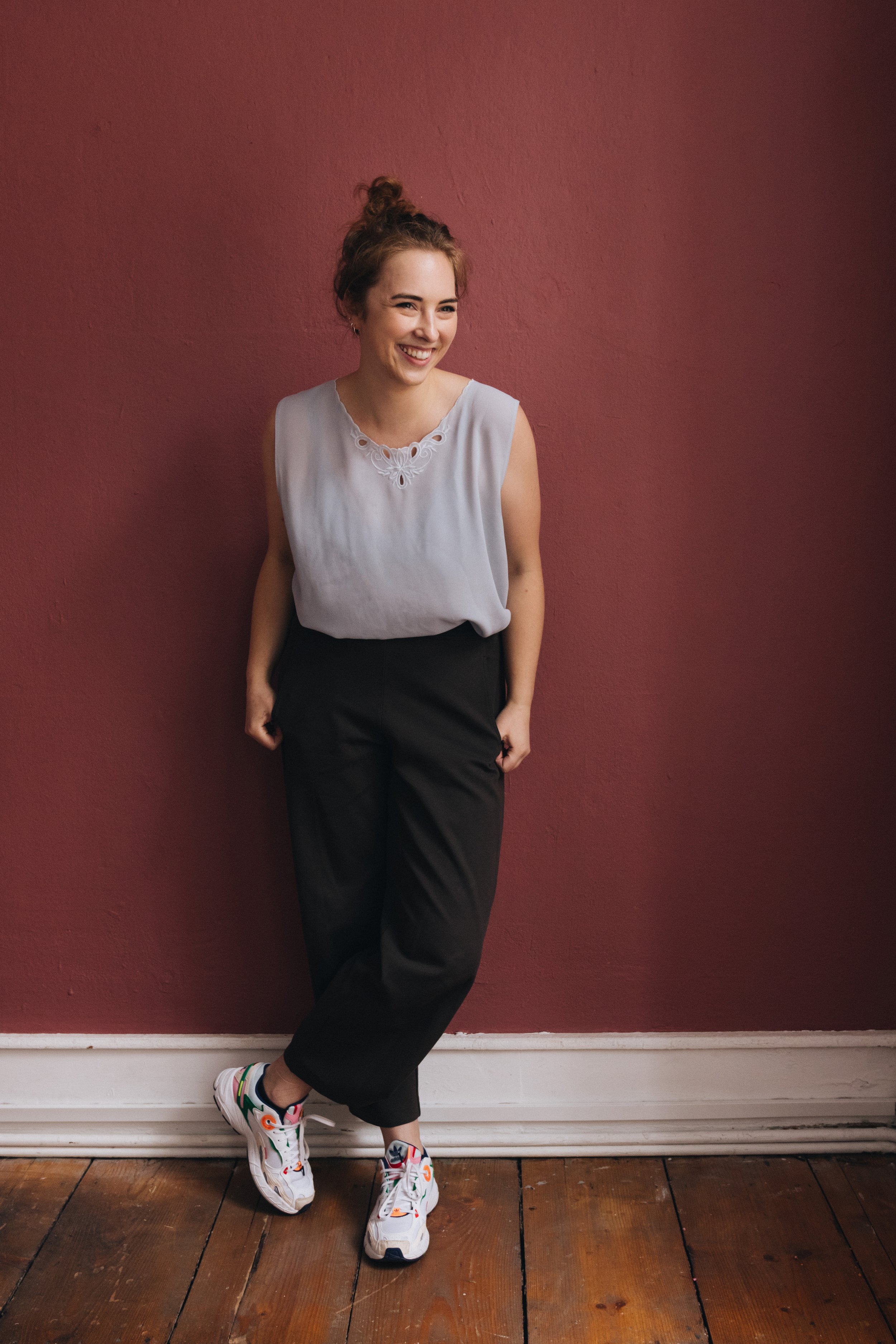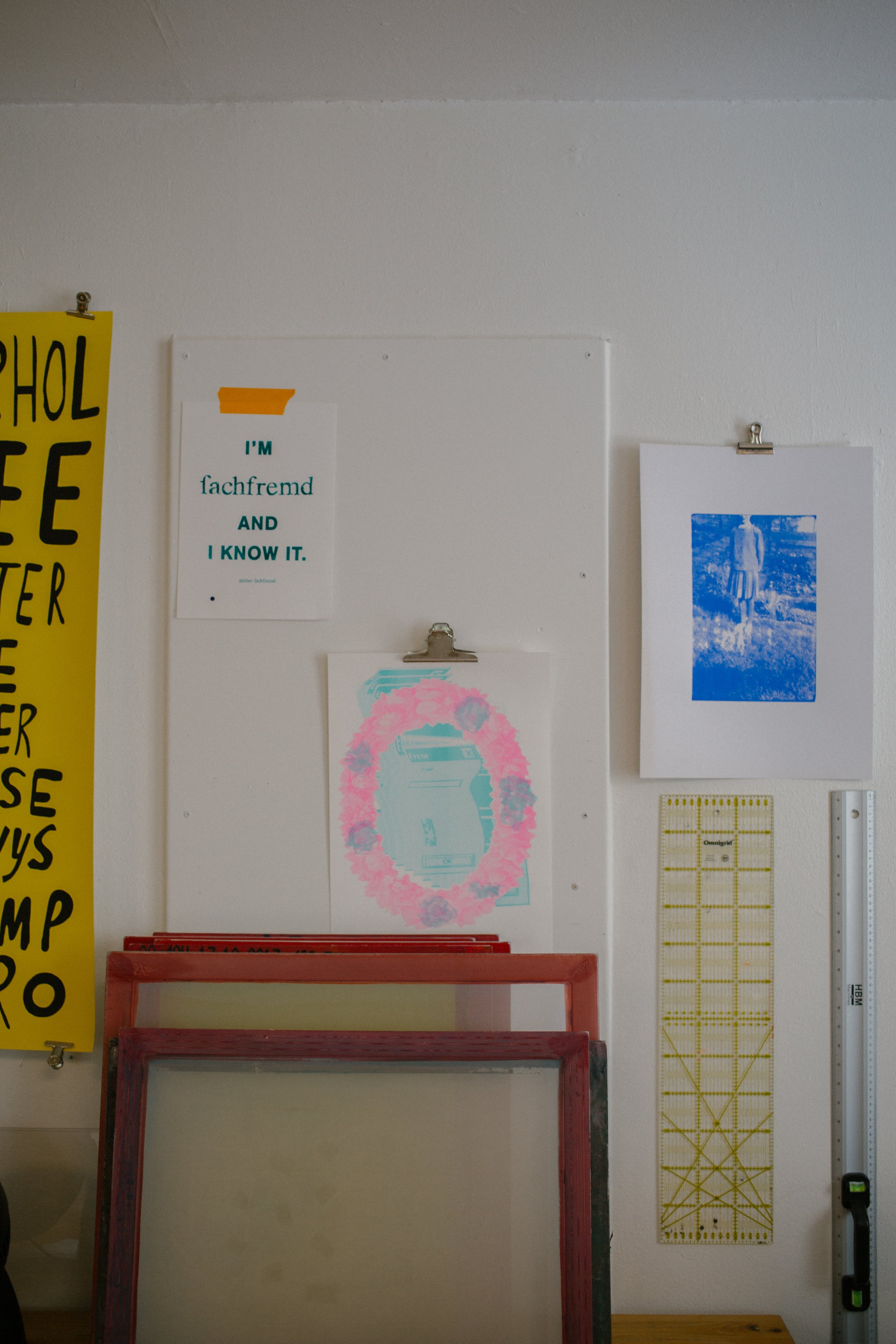Atelier Fachfremd:
Discovering Perfect Imperfection with Rahel Schepers of Atelier Fachfremd
In a world often dominated by the pursuit of flawless design and rigid standards, Rahel, the visionary behind Atelier Fachfremd, stands out with her celebration of "perfect imperfection." Her journey from a dream of working the fashion industry to becoming a freelance communications designer is a testament to embracing one's unique path and the beauty found in the unrefined. Situated in the vibrant city of Cologne, Germany, Atelier Fachfremd serves as both a personal studio and a community space where art, design and an exploration of the ordinary intersect.
At Atelier Fachfremd, visitors can immerse themselves in a variety of workshops that reflect Rahel's creative philosophy. Participants can expect hands-on courses in screen printing on textiles and paper, as well as ceramic screen printing. Monthly drawing and collage evenings, themed "draw like nobody's watching," offer a pressure-free environment to explore creativity without the constraints of perfection. Each workshop is designed to encourage experimentation and self-expression, providing a unique opportunity to experience Rahel's approach to design and creativity.
Join us as we delve into Rahel's inspirations, her philosophy and the innovative courses she offers, revealing how she masterfully intertwines creativity with authenticity.
Imagery : Anna Groß & Franziska Freiwald & Rahel Schepers & Caroline Rubik
Text: Annika Bielig-Bussmann & Rahel Schepers
“Sometimes we have to start somewhere and see where it takes us—after all, new and unique ideas arise when we leave room for the unforeseen and stop the constant censorship and self-sabotage.”
Rahel, what inspired you to become a freelance communications designer? After a very artistic and free design degree in the Netherlands, I dreamed of working in the fashion industry. I then actually started working as a graphic designer in the marketing department of a large streetwear retailer, but quickly realized that I didn't fit in there with my idealism and artistic approach. I also found it very difficult to fit in with the external structures. This dissonance (coupled with other life circumstances) soon meant that I couldn't take it anymore, both physically and mentally.
Thanks to my father, who has been self-employed for as long as I can remember, the concept of freelancing was never foreign to me. He was also the one who encouraged me to give self-employment a try and helped me get my first recurring client, which made the whole thing possible. Looking back, the fact that I hadn't really gotten used to a proper salary after graduating was probably also quite helpful, so the financial drop was fairly manageable. I've occasionally been congratulated on this seemingly courageous step; for me, it honestly felt more like an easy way out, as it would've taken a lot more courage to stay.
Since then, I have learned that freelancing makes sense for me on many levels. I am interested in far too many things and topics to be able to commit to just one. On my own, I can move freely between art, design, theory and practice. That said, my mental health and my resulting inconsistent resilience also play a significant role, as it would probably be much more difficult to deal with in a permanent position.
What does "perfect imperfection" mean to you and how do you try to find it in your work? By "perfect imperfection" I mean an aesthetic of casualness that I find utterly fascinating: coincidences, the ordinary, trivialities and supposed mistakes hold, in my opinion, a raw, genuine and human vulnerability that can never be achieved to this extent through intentional design. And yet this is exactly what I try to achieve in my work. It is these deviations from perfection that make good design for me—perhaps because we recognize our own fallibility in them and feel like we belong.
In addition to my active, creative role, I also see myself as a very passionate and enthusiastic collector of these details. For me, the key lies in an observation that inwardly takes a step back to question visual habits or subconscious interpretations of what we think we see and then look again. I examine my patterns of perception and question why I perceive something the way I do. This process of analysis has over the years become second nature to me and now automatically forms the basis for design processes of these"perfect imperfections.”
Why did you name your studio "fachfremd" and what message do you want to convey with it? The German word "fachfremd" is somewhat difficult to translate; it is closely related to the principle of "imposter syndrome" and means that one works in a certain field but has no formal training or expertise in it. Whether you move calmly in it or feel like an imposter is, of course, a matter of personality.
With a Bachelor's degree in Design and an (almost finished) Master's degree in Art & Design Theory, I am not fachfremd at all. But through my hopping around in different disciplines (combined with occasional perfectionism and the obligatory self-doubt), I am predestined for a life with imposter syndrome. The more I Iearn, the clearer it becomes what I cannot do.
For me, this name therefore functions primarily as a kind of tool to undermine both my own and other people's expectations of me. I have come to understand that my range of interests and my desire to learn and experiment are my greatest strengths. By turning my being fachfremd into a specialty of sorts, I can be more relaxed about it. I want to remove the pressure to perform and the constant evaluation from creative processes (equally for others and myself) and stop perceiving gaps in knowledge as weaknesses. Sometimes we have to start somewhere and see where it takes us—after all, new and unique ideas arise when we leave room for the unforeseen and stop the constant censorship and self-sabotage.
“Once a month I host drawing and collage evenings that take place under the motto "draw like nobody's watching,” with the aim of providing a kind of "creative safe space": no pressure to perform, no right or wrong, no rules. These events are supposed to mainly be about the process, which is why I make a point of emphasizing that it is absolutely fine to leave the room at the end without any "result.”
Can you give us an insight into the different courses you offer in your studio? Most of my courses are both public and private screen printing workshops. It is especially important to me that each participant creates and prints their own design.
In addition to screen printing on textiles and paper, ceramic screen printing plays a larger role for me, i.e. the process of making ceramic transfers. In addition to a course in which this (admittedly pretty niche) technique is learned from A to Z, I have recently introduced a workshop format in which pre-prepared designs are applied to porcelain and then fired without having to go through the lengthy printing process.
Once a month I host drawing and collage evenings that take place under the motto "draw like nobody's watching,” with the aim of providing a kind of "creative safe space": no pressure to perform, no right or wrong, no rules. These events are supposed to mainly be about the process, which is why I make a point of emphasizing that it is absolutely fine to leave the room at the end without any "result.”
What kind of experiments and creative processes do you encourage in your studio? What is the goal of your drawing and collage evenings, and how do you support participants in overcoming their creative blocks? For the collage evenings, you don't need much apart from a scalpel, glue and magazines etc., except perhaps an encouragement to flick through the laid-out books and observe...which images make you look twice and what worlds emerge when you place them in a different context.
At the drawing evenings, there is plenty of material to try out (charcoal, ink, pastels etc.). As for drawing subjects, I lay out old photographs, all sorts of books and make up a different still life from combined objects for each night.
The most fundamental obstacle is one's own expectation, or self-censorship, which sometimes even prevents us from starting at all! That's why, in addition to a glass of wine and candlelight, there is a drawing oracle with which a work assignment can be asked with three dice. Consisting of a possible drawing subject, a suggested material and a drawing exercise, it is designed to overcome any remaining inhibitions. For example, the oracle might suggest to draw the still life in ink without looking at the paper while doing so. The resulting drawing does not stand a chance to meet your own expectations of what your drawing should look like—and as a bonus, these exercises actually teach you to look closely and train the connection between eye and hand, which are the most important skills when it comes to drawing.
Do you use the fachfremd studio mainly as a workshop studio or also as your personal office? How do you divide the space between your workshops, courses and your own creative work? I am still in the discovery phase regarding the use of the space and the distribution of my time. Since everything initially had to run in parallel with the freelance day-to-day business, it was first about financing the space and getting the courses up and running. In the meantime, my work has shifted away from the screen to the studio. My existing clients as a communications designer, however, remain an important mainstay as a regular source of income. Graphic design jobs, accounting and organizational tasks I still handle at my desk at home—partly for logistical reasons and partly because it is easier for me to concentrate on such things there.
How have your own experiences as a learner influenced your decision to offer courses and workshops yourself? I cannot remember consciously deciding to do so. Somehow, the sharing of knowledge and skills has always been part of me and my dream of having my own studio. When something fascinates me, I have an almost physical need to let others participate in it. I want to enable others to experience that moment of inspiration when new learning suddenly opens up worlds almost magically.
My "learning and teaching philosophy" is a product of my bachelor's degree. I was fortunate enough to study at a university where making one's own creative decisions, reflecting on one’s creative process and experimental, interdisciplinary work were were considered most important. It was never about following trends or adhering to design rules. It was more important to try things out, learn from fellow students and lecturers alike, develop one's own opinion from opposing feedback and above all, just get into "doing": setting priorities, making mistakes and learning to let go of cherished ideas.
Essentially, I want to create a space where it is easy to be unpretentious and relaxed about shortcomings. No one should feel uncomfortable not knowing, understanding or mastering something—not even me. Furthermore, it is very important to me to break with destructive behavioral patterns that I observe among creatives. This includes not engaging in skewed competition. With one's own language and individual skills and focuses, there is room for everyone. It is important to me that we support each other generously—whether with praise and recognition for great work, reach on social media or (where appropriate) with constructive feedback.
How important is the exchange with other creatives in your network for your own development and that of the studio? For me, engaging with the work of other creatives is essential for my development. This can be friends who are designers, but also artists from art history or an image that I encounter by chance. I do not believe in the genius who has groundbreaking ideas in a vacuum but in collaboration, engagement and inspiration that fertilize each other and enable new syntheses—sometimes over centuries.
I also believe that imitation of other people’s work has a certain legitimacy here! The essential difference between imitation for learning purposes and a copy is, in my opinion, seeing it as an intermediate step to an independent work, not treating any borrowings as property, but being able to clearly identify where a quote ends and one's own perspective begins. Collaboration on joint projects with other artists is also a crucial catalyst for me to bring my own work out of the vagueness of my own head into time and space. By granting my counterpart access, I realize which aspects of my work I don't care about and which are sacred to me. Through confrontation, I might suddenly find the means to express concepts I couldn’t before or understand the importance of certain aspects in my own work that result in getting rid of one thing or to defend another at all costs.
What are your next big projects or ideas you are currently working on? In recent months, I have been able to observe how the studio has unexpectedly taken on a life of its own, beyond my personal workspace. I want to sort this out for myself on both a content and organizational level to know where I want to go. Here and there, I have given other workshops besides screen printing, and want to expand my workshop portfolio so that instead of recurring formats, there is always something new to discover. A major goal is also to create free time and headspace for my own projects and artistic works, as well as independent collaborations with other artists and labels.










